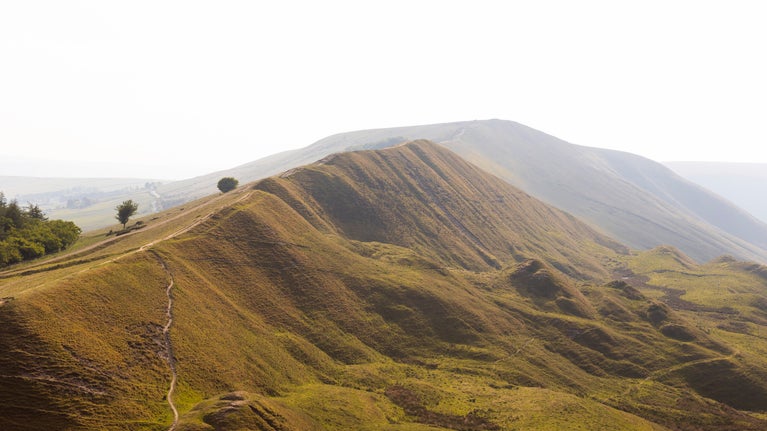
Archaeological work
We look after many rich and diverse archaeological sites. Archaeology helps us to learn more about them and protect them for the future.

The National Trust cares for unique and historic landscapes across the UK, many of which are scattered with the remains of prehistoric occupation. Learn more about the type of archaeological remains we look after from the Neolithic to the Bronze Age period, including barrows, caves and ancient tools.
Barrows are funerary monuments dating from the Early Neolithic (c. 4000 BC) to the Middle Bronze Age (the latest ones dating to c.1400 BC). They were constructed as mounds of rubble or earth and can contain a single or sometimes multiple burials.
The mounds can occur either in isolation or grouped as cemeteries and often acted as a focus for burials in later periods. There are different types of barrow, often located in prominent hilltop locations with extensive views all around.
Long Barrows are Early Neolithic (c. 4000–3000 BC). The earliest Round Barrows date to the end of the Neolithic and continue through the Early Bronze Age into the beginning of the Middle Bronze Age (c. 2400–1400 BC). The following are some examples of barrows in our care.
Mam Tor is well known for its Bronze Age hillfort, but it also had prehistoric burials before the hillfort was constructed. During the 19th century an excavation of two mounds, located at the south end of the hillfort, revealed a bronze axe and some prehistoric pottery. These have been dated by archaeologists to the Late Neolithic or Bronze Age (c.2400-1500BC).
One of the barrows was re-used during World War II as a searchlight emplacement and now has a trig point erected on top of it.
Disc barrows are the most fragile type of round barrow and usually date to the Early and Middle Bronze Age. This example, often referred to as ‘The Shooting Box’, is a good example of an unusual class of monument. It is the only one of its kind known to exist in Shropshire.
Unfortunately the upper central area of the barrow mound has been disturbed by the insertion of a grouse shooting hut. This was probably constructed sometime before 1895 and has now been removed. The lower portion of the barrow survives undisturbed.

West Kennet Long Barrow is a Neolithic burial mound built around 5,600 years ago. Originally the mound would been bright white from the chalk used to build it. The remains of 46 people were found here along with grave goods of pottery, beads, stone tools and a dagger.
Whitesheet Hill is archaeologically diverse, with a Neolithic enclosure dating from approximately 3,600 BC and an Iron Age hillfort. There are also a number of Early to Middle Bronze Age barrows (dating between 6000 and 3400 years ago) marking the graves of important people. The site is a designated Site of Special Scientific Interest with 11 scheduled monuments.
Excavations of caves can provide some of the earliest evidence of human activity. In the White Peak area of the Peak District there are a number of sites which have revealed significant archaeological remains from the prehistoric period.
This impressive looking cave is a natural feature behind a natural arch high up in the bank of Dovedale gorge. It was excavated in 1959 and evidence revealed it was used as a temporary shelter in the Neolithic, Roman, and Medieval periods. This was partially based on the sparsity of finds and the lack of a hearth. Neolithic finds from the excavation consisted of two flint scrapers and some sherds of pottery.

Stone and flint were made into a wide variety of different tools during the prehistoric period, including arrow heads, knives, scrapers and axes. These tools were used for practical tasks like clearing land, cutting wood, and hunting. Creating these objects was a highly skilled task, and some tools are also thought to have additional symbolic significance.
Many of the flint tools found on land cared for by the National Trust have been obtained as chance finds (for example one or two pieces have been found lying on the ground surface by people out walking). Other flints have been found by archaeologists systematically walking across ploughed fields or undertaking excavations.
Fine examples of Neolithic polished stone axes have been found in Shropshire at Wheathill Farm, Uckington Farm and Upper Brompton Farm, Attingham. At Midsummer Camp, in the Malvern Hills, several flint tools were also recovered during archaeological excavations of the hillfort during the 1920s. These items included a Neolithic axe and a flint scraper.

We look after many rich and diverse archaeological sites. Archaeology helps us to learn more about them and protect them for the future.
From hillforts to stone circles, gold mines and medieval castles, there's plenty to explore at the historic places in our care. Discover reminders of the past that tell the stories of our ancestors.

Explore archaeological highlights from the National Trust Heritage Records Online and discover more about the antiquities in our care from ancient burials to industrial landscapes.

Managing the Stonehenge Landscape, Wiltshire requires a careful balance of looking after the archaeology and nature while still making it accessible for visitors.

We survey all our sites for any signs of archaeological significance, using aerial photography and expert analysis on the ground. Find out more about our work to explore remnants of the past, and why it's so important to us.

Visiting Avebury and the surrounding landscape is a unique experience. The area contains multiple Neolithic and Bronze Age features including the largest stone circle in the world which you can enter and explore.
